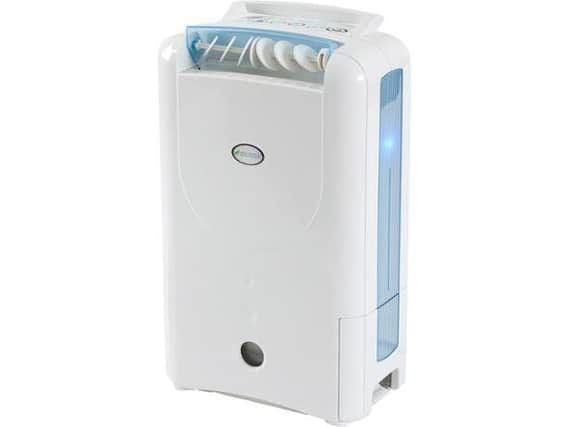Ridding a home of condensation can bring multiple benefits


Scrubbing black mould off the bathroom walls isn’t just unpleasant, it’s a health hazard but it’s been one of my household chores for the last few years.
It coincided with my daughters turning into teenagers and, as many parents will know, that means lots of very long baths and showers creating dense, steamy fogs, which then turned into condensation, followed by mould.
Advertisement
Hide AdAdvertisement
Hide AdI’d considered getting a dehumidifier but recalled them as huge, ugly, energy guzzling, metal contraptions. It was only when we carried a feature about slimline new designs that were ultra-effective did I decide to invest in one.
The result is a resounding success. The bathroom and the hallway in my bungalow are bone dry now thanks to a strict regime that all family members must follow.
The dehumidifier, an EcoAir DD1 Classic, which cost £169.98, is in a corner out of sight by the bathroom door. We simply switch it on while we have a shower/bath then leave it on (with the bathroom door open) for 15 minutes after we’ve finished. Concerns over running costs have been abated as it’s just 5p an hour when on economy mode. Another benefit is that you can use it when you commit the cardinal condensation sin of drying wet washing on a radiator.
Sally Fok, co-founder and MD of EcoAir, says: “Humidity problems in the home are caused by excess moisture in the air, which can come from condensation, rain entering the house, leaking pipes, rising damp, moisture in construction materials, faulty seals on door or window frames, faulty damp proof courses, inadequate ventilation, high rainfall, and everyday household activities such as cooking, running baths and drying laundry.
Advertisement
Hide AdAdvertisement
Hide Ad“In the UK, many of us live with too much humidity, especially in the winter months. By turning heating on and closing doors and windows, we reduce air circulation, causing moisture to become trapped indoors.
“Optimum indoor humidity levels are between 40-60 per cent. Any higher can be damaging to our homes and our health. Watch out for the signs of high humidity, which are: condensation, appearance of mould or mildew, rotting wood or peeling paint, musty odours, yellowish-brown water stains or fluffy white salt deposits on walls, ‘tide-lines’ along the bottom of basement or ground floor walls, allergic reactions, asthma attacks, respiratory problems or skin infections.”
Sally has this advice on how to tackle humidity: “The most essential measure to reducing humidity in the home is to ventilate. Good ventilation, especially in winter, will allow excess moisture to escape. Open windows and use vent fans every time you are cooking and after taking a shower or bath. Allowing the air to circulate is a quick way to release trapped humidity.
“For those looking for a more immediate and controlled solution, a dehumidifier can successfully restore and maintain the correct moisture levels in the home. Dehumidifiers work by extracting moisture from the air, therefore preventing the growth of microbes.
Advertisement
Hide AdAdvertisement
Hide Ad“Desiccant dehumidifiers are particularly effective in reducing the risk of infection from airborne viruses or bacteria. As well as reducing the level of moisture in the air, they instantly kill any microorganisms that pass through the unit due to the internal heat, so act as an air purifier.
A dehumidifier will also help to cut energy costs. The higher the humidity, the harder it is to heat a home, which leads to higher energy bills.”
www.ecoair.org